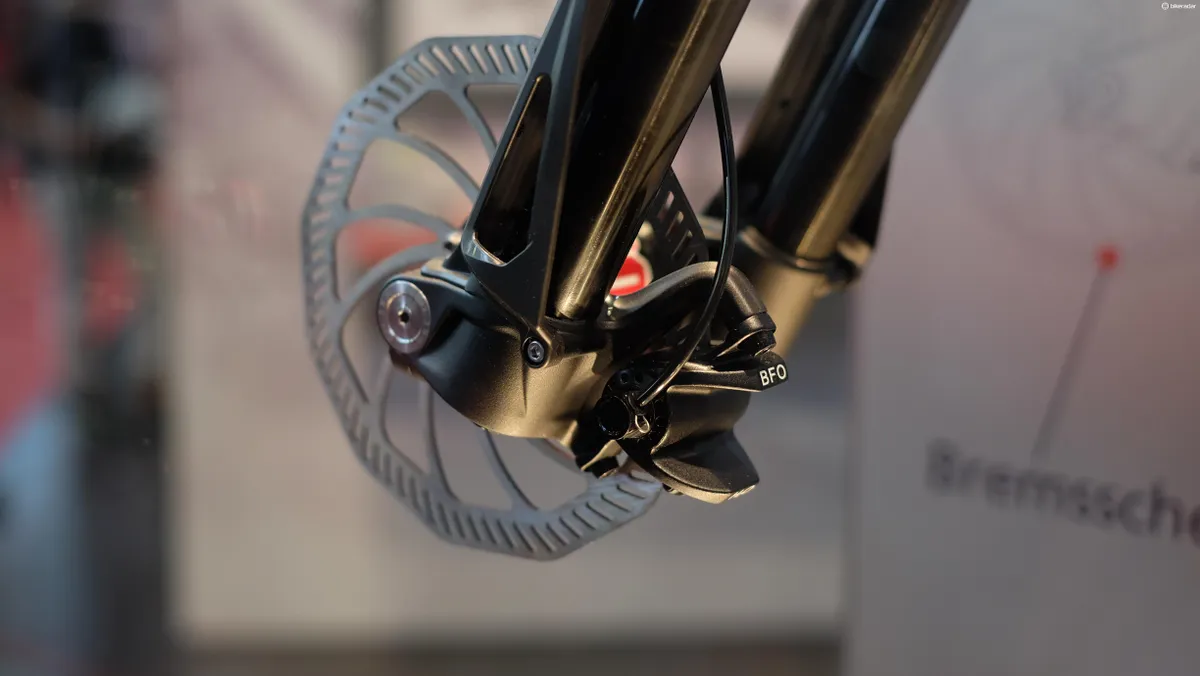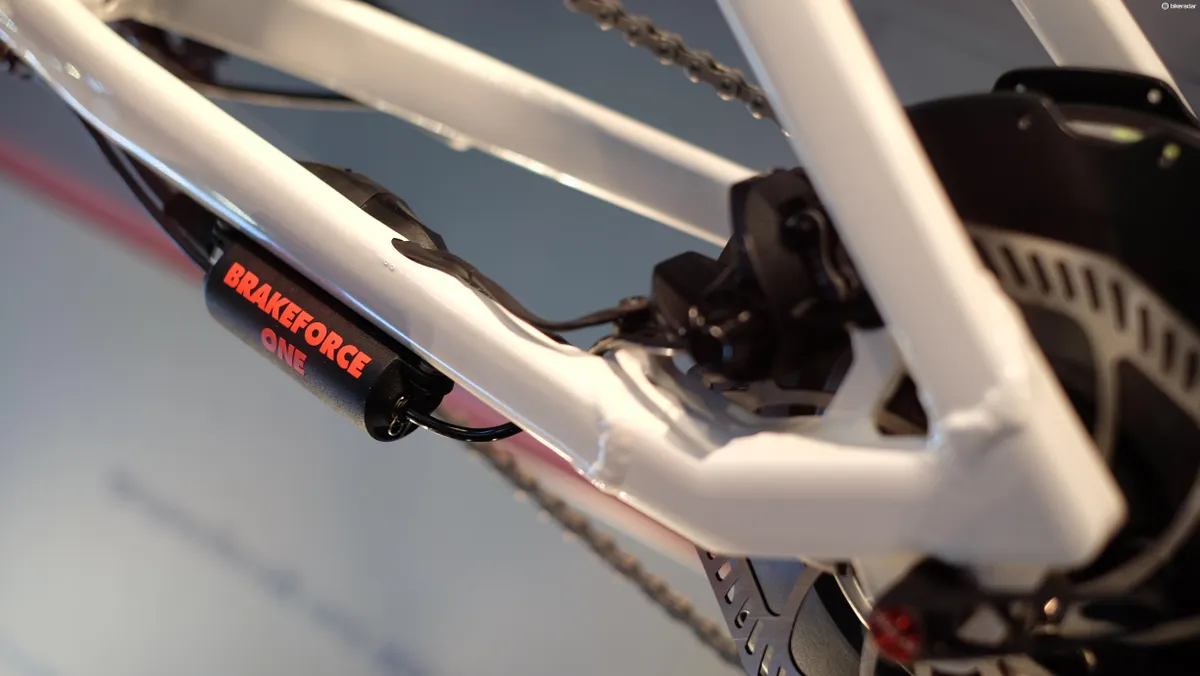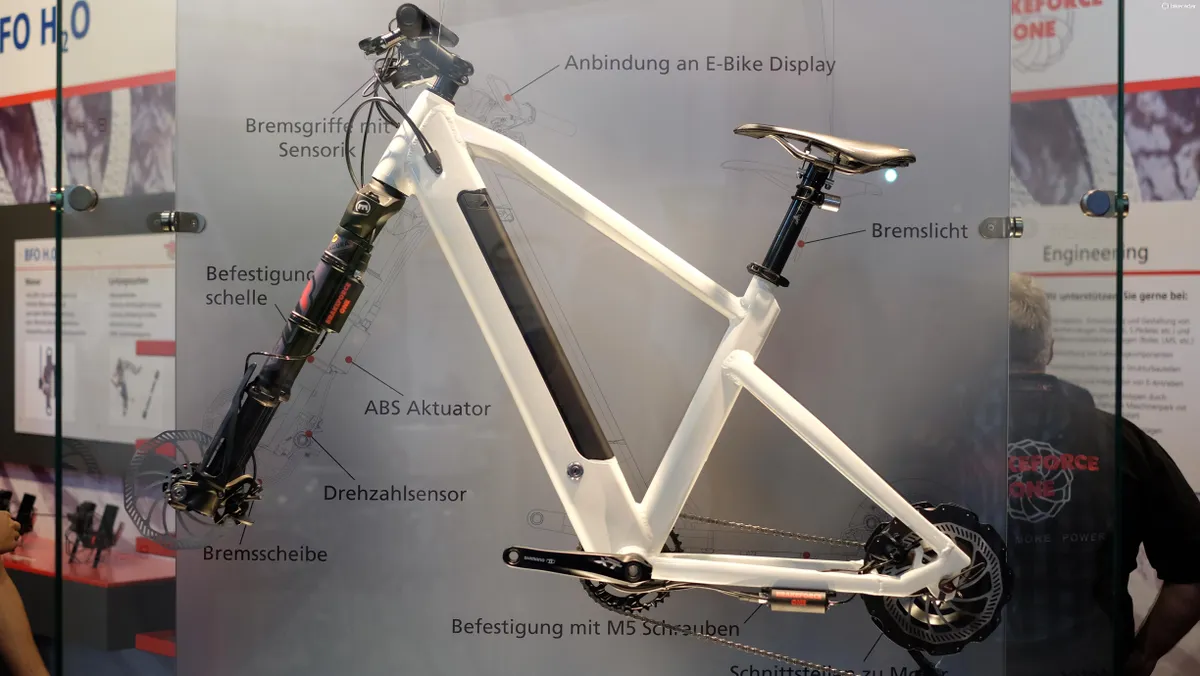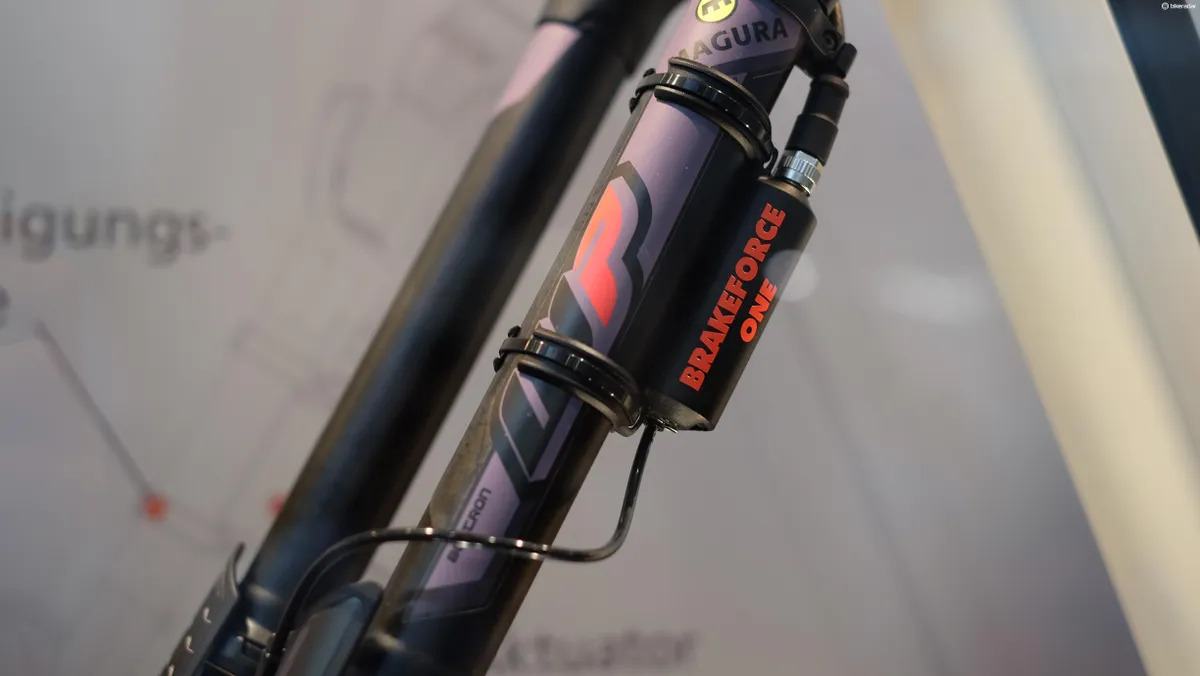Anti-lock brakes could soon become the norm for e-bikes thanks to technology developed by German company Brake Force One. The system, which we spotted at this year's Eurobike, uses actuators and sensors on a modified version of Brake Force One’s H20 water-filled brakes, and is set to be available in early 2018.
Already the norm on most cars and some motorcycles, ABS systems are responsible for automatically modulating a vehicle’s brakes during an emergency stop or when traction is limited. ABS-equipped vehicles will usually offer significantly improved stopping performance as well as the ability to prevent dangerous and difficult to control skidding.
With e-bikes opening up cycling to a potentially new breed of more vulnerable and inexperienced cyclists, and the bikes themselves requiring plenty of power to stop their heft, the result of poor quality braking could be a recipe for disaster.

How does it work?
The Brake Force One system uses a speed sensor at each brake calliper, which transmits information on the individual speed of each wheel. If and when the sensor detects a change in these speeds that is judged to be a problem, an actuator between the brake’s lever and calliper will restrict the flow from lever to calliper, releasing the brake. The actuator will then rapidly apply and release the brake, bringing the bike to a safe and controlled stop.
The system itself, and in particular its actuators, require a fair bit of power, so it's integrated to work seamlessly with Alber motors — taking its power from the on-board battery. It even transmits data on the ABS system itself through the head unit and via CAN-Bus.

Another interesting spin off from this technology is the potential for traction control. Working in a similar way to ABS, traction control uses the same speed sensor to monitor speed at the rear wheel. When a loss of traction is detected the system cuts power to the motor, which allows the rear wheel to regain traction.
In theory, this should be a relatively easy thing for Brake Force One’s engineers to work in through software.
It looks like we’ll have to wait a little while for this technology though, but it does look like a logical step forward to us.


